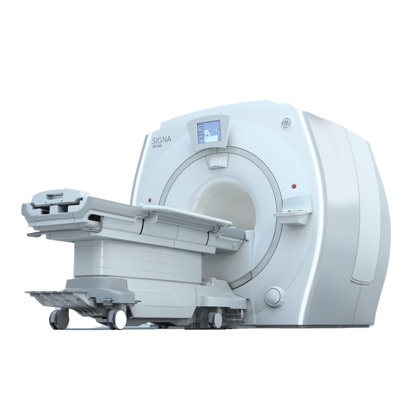Hendrick Health unveils Official Texas Historical Marker celebrating century of care
- Category: News, Hendrick Clinic
- Posted On:

A new silver-and-black aluminum Official Texas Historical Marker is now displayed outside Hendrick Medical Center’s main entrance to commemorate Hendrick Health’s century of service.
“Historical markers are tangible and visual reminders of stories important to the community and to Texas,” said Brad Holland, Hendrick Health president and CEO. “For us, this marker commemorates not only our building, but honors the individuals who have made lasting impacts to the organization during the last 100 years.”
The marker was unveiled during an event at 10:30 a.m. Thursday, August 14, 2025. Attendees included Hendrick Health employees and Board members and Taylor County Historical Commission members.
At Hendrick Medical Center, the new marker stands near where the original entrance would have been located when the hospital opened September 15, 1924, as West Texas Baptist Sanitarium. Those first front doors were intentionally positioned to face south toward downtown Abilene as a symbolic welcome to the people served.
“A lot has changed during the last 10 decades,” said Holland. “But what hasn’t changed is our mission. Like our founders, we remain committed to providing local, high-quality healthcare guided by a ministry of compassion.”
Today, Hendrick Health is directed by a local, volunteer board and affiliated with the Baptist General Convention of Texas. The healthcare system employs approximately 5,400 to serve 400,000 residents in 24 counties, a landmass representing 9% of the state. The health system provided $35.2 million in charity care in 2024.
Hendrick Health operates three hospitals – Hendrick Medical Center and Hendrick Medical Center South in Abilene and Hendrick Medical Center Brownwood in Brownwood, Texas – as well as Hendrick Clinic, a multi-specialty medical group of physicians and other advanced professional providers.
“As the largest private employer in the area, Hendrick Health remains a unicorn in the healthcare field,” said Holland. “Hendrick Health has never been bought or sold, so governance decisions are made at the local level – a rare occurrence in today’s environment with so many community hospitals closing or selling.”
For the last 11 months, Hendrick Health has been celebrating its Centennial year with events focusing on its roots and its achievements. The festivities started on Sept. 15, 2024, with a convocation at First Baptist Church-Abilene. Many of the hospital’s founders were associated with the congregation, including Rev. Millard A. Jenkens, who dreamed of a hospital and rallied others to make it a reality. Officials at Simmons College (now Hardin-Simmons University) also were instrumental in the hospital’s founding.
Other Centennial activities included flag-raising ceremonies at all three hospitals, working with local historian Jay Moore to publish the book A Century of Healing Ministry and a community wellness fair. Sales of the book benefit the Hendrick Medical Center Foundation.
In response to a community need for a faith-based local hospital that served all, the five-story sanitarium opened in north Abilene with 52 beds and room for 75. As Abilene and West Central Texas grew, so too did the hospital. Advancing healthcare services and medical specialties prompted the addition of wings, buildings, employees and physicians.
Name changes came too, most notably Hendrick Memorial Hospital in 1936 to honor the philanthropy of Ida and Thomas Gould “T.G.” Hendrick. Their gift brought about renewed hope when the hospital faced financial challenges during the Great Depression. The name changed to Hendrick Medical Center in 1977, followed by Hendrick Health System in 1997.
With the 2020 acquisition of Hendrick Medical Center South and Hendrick Medical Center Brownwood, the expanded health system was renamed Hendrick Health.
Visit Hendrick100.org for historical photographs and a timeline of major events in Hendrick Health’s history.
Hendrick Health Historical Marker Copy
Hendrick Medical Center
In 1915, Millard A. Jenkens (1872-1962), the new pastor of Abilene’s First Baptist Church, saw a need for a hospital that prioritized serving all people, whether or not they were able to pay for treatment. His congregation shared his vision and donated $35,000 to establish a Baptist hospital. A committee formed of first Baptist congregants and officials from Simmons College (now Hardin-Simmons University). Judge Clifton Mott Caldwell and his wife, Cora (Keathley) Caldwell, donated six acres for a Baptist hospital. David S. Castle designed the 52-bed facility, which opened on September 15, 1924, as the West Texas Baptist Sanitarium. The hospital’s modern facilities included three operating rooms, three elevators and an X-ray department. The hospital also hosted a nursing school. Notable early leaders include Earl Matthew Collier (1898-1981), the longest serving superintendent from 1929-1970.
The new hospital experienced strain during the Depression. In 1936, Thomas G. Hendrick (1862-1946) and his wife, Ida (Nations) Hendrick (1866-1946), paid off the hospital’s existing debt and financed a four-story east wing, including two specialty wards for children. The hospital was renamed Hendrick Memorial Hospital in their honor. Regular additions followed, including a four-story west wing (1943), a four-story north wing (1946), a six-story service wing (1957), student nursing housing (1959), the Millie L. Anderson Building (1963), Mary Meek School of Nursing building (1966), and more. In 1977, the facility was renamed Hendrick Medical Center to reflect its regional healthcare role. For 100 years, Hendrick has committed to provide high-quality healthcare in West Central Texas.
(2023)



